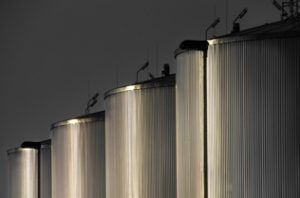Tanks that are used for commercial properties need to be made of materials that are capable of meeting the specific requirements of the property when it comes to the purpose of the tank installation. Some of the most popular tank materials include polyethylene, steel, fiberglass, and some even go for concrete. However, the question remains regarding which tank material is the most beneficial for commercial properties. Read on to find out.

Polyethylene
One of the most commonly used materials for tanks is polyethylene, which is proven to be durable, strong, and lightweight. It is also considered to be the most cost-effective compared to other materials used in building tanks, which is why more and more people with commercial properties go for this option. Some go for polypropylene, which has the same tensile strength and damage resistance as polyethylene. Perhaps the only difference is that a polypropylene tank, or tanque polipropileno in Spanish, has a more translucent color. Another great advantage of these poly tanks is that they are quite easy to install due to their lightness.
Steel
Another material that is commonly used in making tanks installed in commercial properties is galvanized steel. This is a type of steel that has a zinc coating intended to protect it from corrosion. Most steel tanks are built to hold large capacities, which makes them the perfect solution for commercial properties that have huge storage requirements. Nevertheless, even with the zinc coating, galvanized steel can rust over time, and the zinc can even leak into the contents of the tank.
Fiberglass
Tanks made of fiberglass materials are known to be very stiff and rigid. But in parallel, fiberglass tanks are relatively thin and light too. Because of this, fiberglass tanks are not durable enough since they are prone to cracking. Tanks made of fiberglass materials also allow more light to pass through them. Thus, they are not efficient in reducing algae growth. The great news, however, is that fiberglass tanks can resist both internal and external corrosion, making them suitable for both underground or above ground installations.
Concrete
You may be surprised to know that there are tanks made from concrete materials as well. Tanks made from concrete are surely strong and long-lasting, particularly if they are well-maintained. This is the reason why commercial properties often leverage concrete tanks for their sewage system. In this case, the tanks are installed underground. Concrete tanks can also come in various shapes, but they also have reinforcements that can sometimes be made of steel. When this steel corrodes, it can cause the concrete tank to break. Lime can also be found in the concrete material, which can sometimes leak into the contents of the tank.

To wrap things up, there are several types of materials that can be used in building tanks that are meant to be used in commercial properties. However, different commercial properties need to have tanks installed for varying purposes. Thus, it remains that the tank material that is most beneficial for commercial properties depends on the particular purpose that the tank will be used.







 The 2024 virtual Men’s Round Table will be held Q4, 2024, date TBD.
The 2024 virtual Men’s Round Table will be held Q4, 2024, date TBD.












